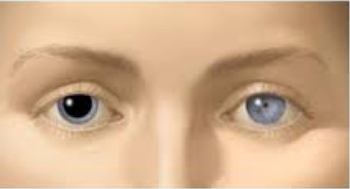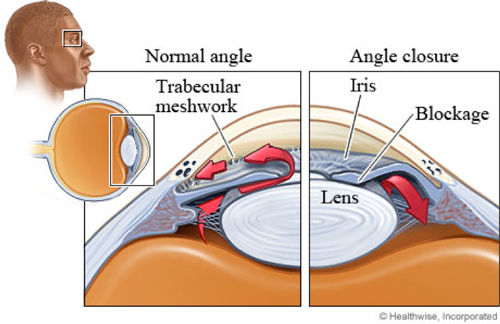Throughout any normal day, we see many emergency office visits. One recently peaked my interest – a patient called and said she thought her cat scratched her eye. Her eye was tearing profusely and light sensitive, but her biggest concern was her dilated pupil. This young lady had rinsed her eye with some over the counter allergy drops, and after 10 to 15 minutes she noticed her pupil was very dilated.
First, let’s define dilation. It is a common term used in the eye field. But there are many new techs out there that may not know the distinctions of the word. Dilation is when mydriatic drops are placed in the eye. The mydriatic drop is an agent that induces dilation or enlargement of the pupil. Drugs such as tropicamide are used to permit examination of the retina and other structures of the eye, and also to reduce painful ciliary muscle spasms. Once the drops are placed in the eye, it takes about 15 to 20 minutes to fully dilate the pupil. The dilating eye drop may make the eye sting and may also cause a medicine taste in the mouth. Common side effects are blurry near vision and light sensitivity - sometimes for several hours.

Dilated pupil on left. Constricted pupil on right.
Most over the counter drops are phenylephrine. This is a decongestant that shrinks blood vessels. Phenylephrine ophthalmic is used to relieve eye redness, dryness, burning, and irritation caused by wind, sun and other irritants. Prescription-strength phenylephrine ophthalmic is used to constrict blood vessels in the eye and dilate the pupil for conditions such as glaucoma, before surgery, and before eye examinations.
Phenylephrine has many side effects in addition to pupil dilation. It can cause rapid heartbeat, sweating, tremors, pale skin, light headedness, severe headaches, buzzing in ears, anxiety, shortness of breath, chest pain or pressure, and pain in the jaw that can spread to your shoulder. Although the risk of serious side effects is low when phenylephrine ophthalmic is used in the eye, these side effects can occur if the medicine is absorbed into the bloodstream.
A bigger concern is the possibility of inducing narrow-angle glaucoma by using the wrong eye drop or medication. Acute narrow-angle glaucoma can occur suddenly when the iris is pushed or pulled forward. This is exactly what happens to the iris when the pupil is dilated. The angle-closure causes blockage of the drainage angle in the eye, where the trabecular meshwork allows outflows of fluids. When the internal eye structure is blocked in this way, the intraocular pressure of the eye may spike. The pressure spike can damage the optic nerve (the optic nerve is the nerve that transmits the images from the eye to the brain). Angle-closure can cause severe eye pain, headaches, halos around lights, nausea and vomiting, and even vision loss. Acute angle-closure glaucoma is a medical emergency. If the high pressure is not reduced quickly, it can cause permanent vision loss.

During a routine vision exam, your eye doctor will check the angles to make sure the patient is safe for dilation. But when a patient is self treating with over the counter medications the angles are not being evaluated and even though it is rare; angle closure is possible. Before using drops that contain phenylephrine, make sure you get approval for use from your eye doctor. The doctor may also have recommendations that will produce a better result depending on the problem. If a patient is having symptoms of an eye infection or abrasion, the doctor will instead prescribe an antibiotic. This was the case for the patient that came into the office with the cat scratched cornea. She was given an antibiotic drop and a bandage contact lens. She was advised to stop using the over the counter drop. Within one day, her corneal abrasion was healed, and the pupil returned to its normal size.

Linda Hardy received the American Optometric Association Paraoptometric of the Year Award at the 2016 SECO meeting in Atlanta, Georgia. Linda is a Certified Optometric Technician (COT) and Certified Ophthalmic Assistant (COA). She is also ABO and NCLE certified and a Licensed Dispensing Optician (LDO) in the state of Georgia.
A graduate of Georgia Medical Institute as a Registered/ Certified Medical Assistant, Linda began her optical career working with a group of ophthalmologists as an ophthalmic assistant. She has been the Clinical Coordinator with a private optometry practice in Newnan, Georgia for 15 years.
Linda is also a speaker and educator at regional optical meetings. She and her husband have five children, and she enjoys spending time with her family, exercising, reading and volunteering in her community.











